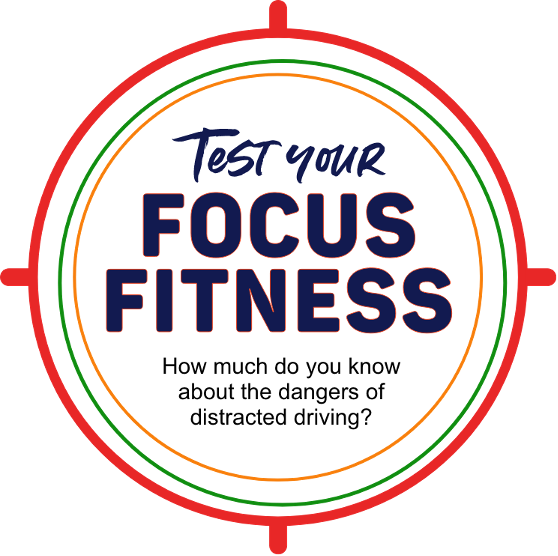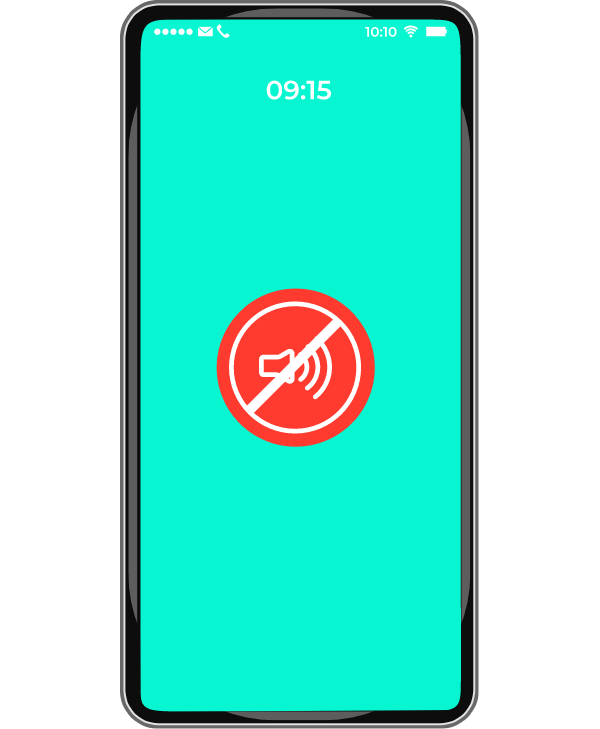Life is full of distractions. Driving shouldn’t be.
Distracted driving is now the leading cause of all crashes. Let’s keep our eyes and minds on the road.

Be Alert

Hit a number to see the dangers of distracted driving

Silence it while driving!

Stay alert!

Don't text & drive!
Multitasking: possible or not?
Science says no. When texting and driving at the same time, your brain is just switching between tasks very rapidly, degrading your ability to drive well.
Press another number!
Delaware cell phone law
Drivers may not talk without using a hands-free device. They may not read, write or send texts, email or use the Internet. First offense: $100 fine.
Press another number!
Exactly how “impaired” are texting drivers?
One study shows that texting while driving is like driving with a blood alcohol level twice the legal limit (0.19 vs. 0.08)!
Source: https://facilities.uw.edu/blog/posts/2016/07/26/texting-and-driving
Press another number!
Why texting is so risky
While some distractions may take your eyes off the road, or your hands off the wheel, or your mind off the driving, texting does all three.
Press another number!
The truth about hands-free cell phones
When your mind is diverted from the road, your brain only processes a fraction of what you see. Drivers talking on cell phones, even hands-free, can miss 50% of their surroundings.
Source: https://www.nsc.org/road/safety-topics/distracted-driving/cell-phone-distracted-driving
Press another number!
The dangers of “inattentional blindness”
Inattentional blindness while driving is the failure to notice an object because your attention was engaged on another task, such as texting.
Press another number!
Why talking on the phone is worse than talking to a passenger
Your passengers can see what’s happening on the road, alert you, and stop talking to give you extra focus. People on the other end of the line cannot.
Press another number!
How many motorists are texting and driving?
While 92% of U.S. drivers believe texting and driving is dangerous, 26% report having sent, and 36% have read a text/email while driving.
Source: https://aaafoundation.org/2021-traffic-safety-culture-index/
Press another number!
Safe driver cell phone tips
Set your phone to “Do Not Disturb” while driving so you can give the road your full attention. Speaking or texting on your phone is never worth the risk.
Press another number!
Multitasking: possible or not?
Science says no. When texting and driving at the same time, your brain is just switching between tasks very rapidly, degrading your ability to drive well.
Delaware cell phone law
Drivers may not talk without using a hands-free device. They may not read, write or send texts, email or use the Internet. First offense: $100 fine.
Exactly how “impaired” are texting drivers?
One study shows that texting while driving is like driving with a blood alcohol level twice the legal limit (0.19 vs. 0.08)!
Source: https://facilities.uw.edu/blog/posts/2016/07/26/texting-and-driving
Why texting is so risky
While some distractions may take your eyes off the road, or your hands off the wheel, or your mind off the driving, texting does all three.
The truth about hands-free cell phones
When your mind is diverted from the road, your brain only processes a fraction of what you see. Drivers talking on cell phones, even hands-free, can miss 50% of their surroundings.
Source: https://www.nsc.org/road/safety-topics/distracted-driving/cell-phone-distracted-driving
The dangers of “inattentional blindness”
Inattentional blindness while driving is the failure to notice an object because your attention was engaged on another task, such as texting.
Why talking on the phone is worse than talking to a passenger
Your passengers can see what’s happening on the road, alert you, and stop talking to give you extra focus. People on the other end of the line cannot.
How many motorists are texting and driving?
While 92% of U.S. drivers believe texting and driving is dangerous, 26% report having sent, and 36% have read a text/email while driving.
Source: https://aaafoundation.org/2021-traffic-safety-culture-index/
Safe driver cell phone tips
Set your phone to “Do Not Disturb” while driving so you can give the road your full attention. Speaking or texting on your phone is never worth the risk.


How much do you know about the dangers of distracted driving?
1 of 10


Correct!
This group represents 25% of all fatal traffic crashes where distracted driving was a factor.
sorry!
The correct answer is 25-34. This group represents 25% of all fatal traffic crashes where distracted driving was a factor.
Resources
- NHTSA Traffic Safety Facts Distracted Driving in 2021 https://crashstats.nhtsa.dot.gov/Api/Public/ViewPublication/813443

Correct!
Science says your brain is just switching between tasks very rapidly, degrading your ability to drive well.
sorry!
The correct answer is No. Science says your brain is just switching between tasks very rapidly, degrading your ability to drive well.
Resources
- https://www.nsc.org/workplace/resources/infographics/the-great-multitasking-lie

Correct!
There are many things that can distract you. Always keep your hands on the wheel and your eyes on the road.
sorry!
The correct answer is All of the above. Always keep your hands on the wheel and your eyes on the road.
Resources

Correct!
Anything that takes your mind off driving makes you less safe.
sorry!
The correct answer is All of the above. Anything that takes your mind off driving makes you less safe.
Resources

Correct!
MRI scans showed that listening to someone speak while driving reduced brain activity associated with driving by 37%.
sorry!
The correct answer is 37%. MRI scans showed that listening to someone speak while driving significantly reduced brain activity
Resources
- https://www.cmu.edu/homepage/computing/2009/summer/distracted-drivers.shtml

Correct!
That’s longer than an average city block. Just imagine what you haven’t seen.
sorry!
The correct answer is 350 feet. That’s longer than an average city block. Just imagine what you haven’t seen.
Resources
- ArriveAliveDE.com 5-Second Rule Tool

Correct!
Even when talking hands-free, drivers can miss seeing up to half of what’s around them.
sorry!
The correct answer is 50%. Even when talking hands-free, drivers can miss seeing up to half of what’s around them.
Resources
- https://www.nsc.org/road/safety-topics/distracted-driving/cell-phone-distracted-driving

Correct!
As your brain refocuses, your driving skills are not at their best.
sorry!
The correct answer is 13 seconds. As your brain refocuses, your driving skills are not at their best.
Resources
- https://blog.drivedifferent.com/blog/10-distracted-driving-statistics-and-facts-for-safe-drivers

Correct!
Delaware law does not allow for any use of your phone while operating a motor vehicle except with a hands-free device.
sorry!
The correct answer is None of the above. Delaware law does not allow for any use of your phone while operating a motor vehicle except with a hands-free device.
Resources
- https://ohs.delaware.gov/distracted.shtml

Correct!
See our tool, The Great Escape, for a full list of tasks to complete before you drive.
sorry!
The correct answer All of the above. See our tool, The Great Escape, for a full list of tasks to complete before you drive.
Resources

You got 0 out of 10 correct!
THE GREAT ESCAPE
from Distracted Driving


5-Second Rule Tool
How far does your car travel in the 5 seconds you spend looking at a text?
Choose your vehicle’s speed using the speedometer to find out.
Dashboard speedometer

Tips for staying alert
Here are some tips for keeping your focus where it belongs – on the road:
-
Use cell phone for emergencies only
-
Download an app that silences calls and texts while your car is in motion
-
Multitask when you’re outside the car
-
Avoid eating/drinking while driving
-
Secure children and pets
-
Put makeup on at home
-
Set temperature controls before you start moving
Distractions to avoid
There are so many distractions when we drive. Try to avoid these risky behaviors:
-
Texting or talking on handheld phone
-
Searching for items in a purse or wallet
-
Checking the GPS
-
Watching a crash on the side of the road
-
Securing a seat belt
-
Changing the radio or music selection
-
Talking with passengers
-
Reaching for an item that has fallen on the floor
KEEP YOUR EYES
ON THE ROAD.









